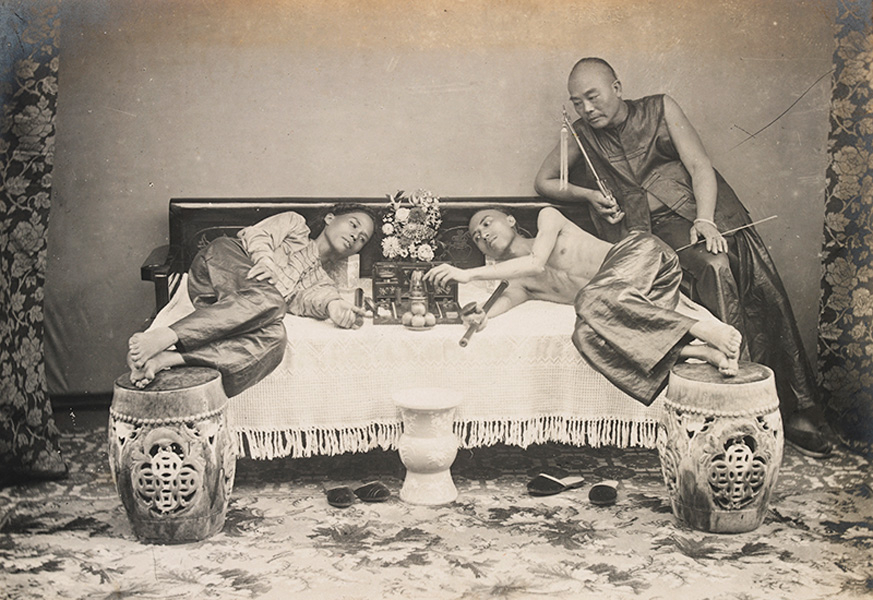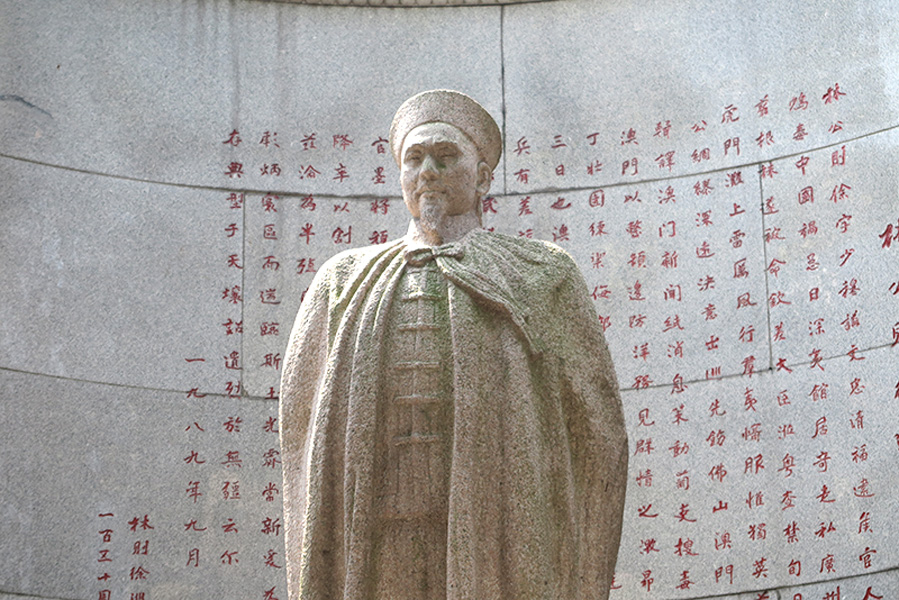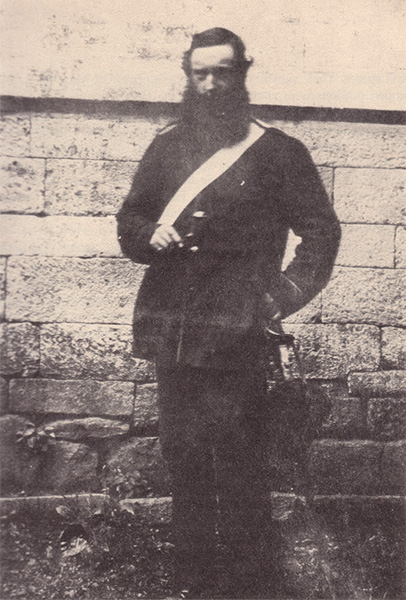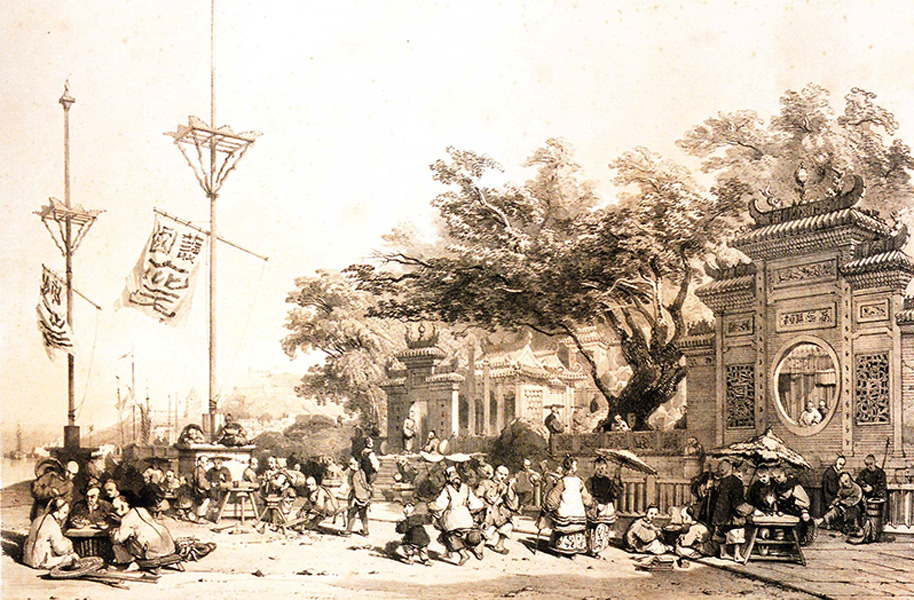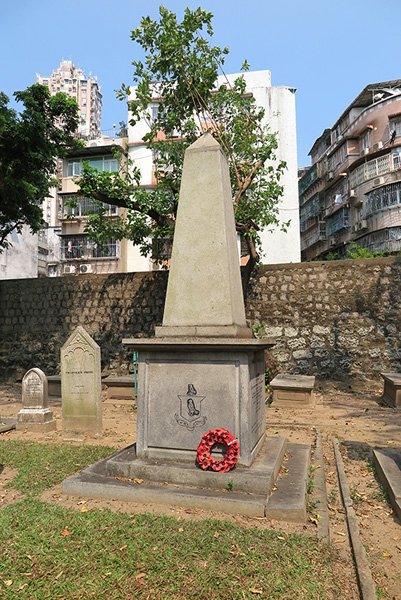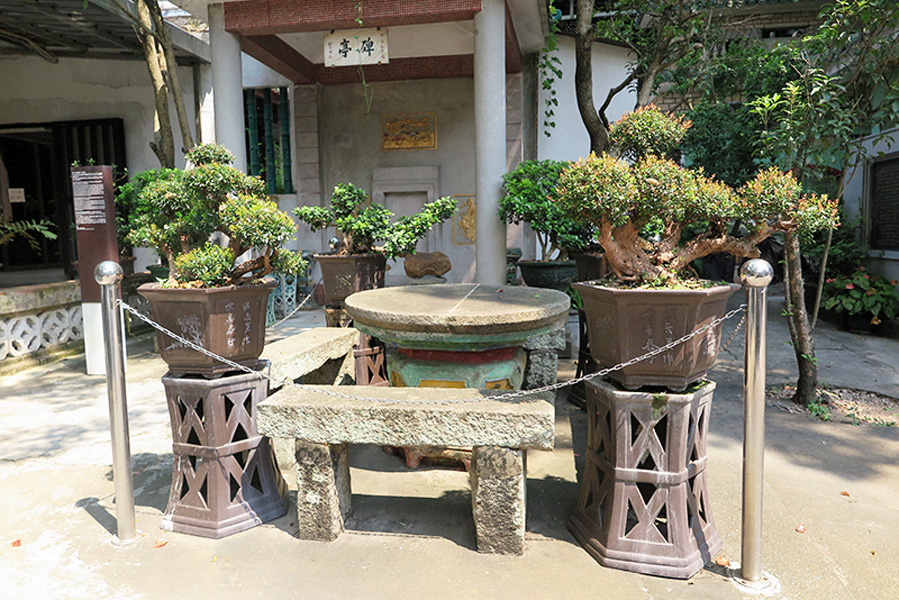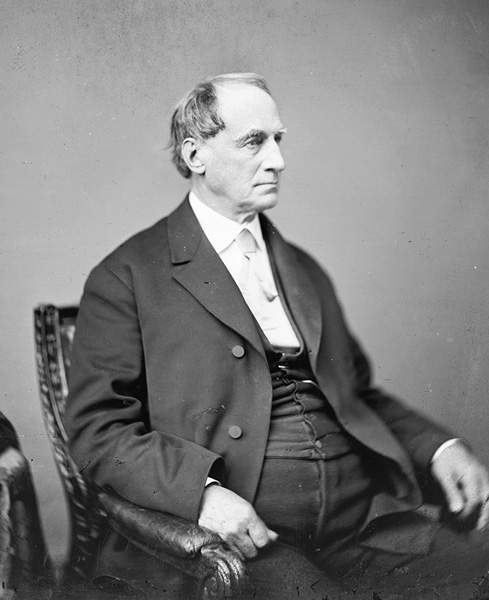Opium trade was rampant when European countries made great profits selling opium to China in the 18th century, during which Macao (Macau) became an entrepot of such trade. Realising the severe social and economic repercussions brought by opium, the Qing court (清朝) spared no effort to crack down this trade.
The intensifying Sino-British controversy over the opium trade sparked the First Opium War in 1840. The Portuguese in Macao faced pressure from both the Qing court and Britain. The former requested them to repel the British, while the latter sent warships forcing them to protect the British civilians. In the same year, the armed conflict known as the Battle of the Barrier broke out between the British fleet and Chinese soldiers near the Border Gate, Macao. The Chinese retreated in the end.
The Qing court signed the Treaty of Nanking (Treaty of Nanjing, 《南京條約》) with Britain after losing the First Opium War in 1842, crippling the trade in Macao. The war also revealed the Qing’s weak military strength, bolstering Portugal’s confidence in colonising Macao.
|
|
Did China engage Britain in Macao during the First Opium War? |
|
|
See answer below. |
Opium addicts. (Photo credit: Fotoe)
A statue of Lin Zexu (林則徐) outside Lin Fong Temple. Lin inspected Macao in the capacity of imperial commissioner in September 1839.
Charles Elliot, the Chief Superintendent of British Trade in China.
A-Ma Temple before the First Opium War, painted sometime between 1838 and 1839. (Collection of the Macao Museum of Art)
The Imperial Commissioner Lin Zexu arrived in Guangzhou (廣州) to enforce the ban on opium in 1839. Charles Elliot, the Chief Superintendent of British Trade in China, refused to cooperate, which resulted in Lin expelling the British. Elliot and British merchants then fled to Macao several times and claimed that the Portuguese would offer them shelter. Lin thus inspected Macao to prohibit the opium trade and warn the Portuguese.
Lin and the Viceroy of Liang-Guang (兩廣總督) Deng Tingzhen (鄧廷楨) inspected Macao in the morning on 3 September 1839. They were received by members of the Municipal Council of Macao at the Border Gate. Later, Lin reiterated to the Portuguese in Lin Fong Temple the prohibition of possessing opium and leasing premises to illegal British merchants. Lin then inspected the Macao city, including the Ruins of St. Paul’s, Rua dos Ervanários, Praia Grande Bay, and A-Ma Temple, before he left at noon. After the inspection tour, Lin drafted new regulations on the management of Macao and reinforced the garrison at the Border Gate.
However, Lin’s actions did not deter the British from going to Macao. Many of them later returned and stayed. The British fleet even intruded the Inner Harbour of Macao, coercing the Portuguese to protect the British civilians.
Istmo de Ferreira do Amaral (then known as “Lotus Stem”) in 1840. The sand bank with a border checkpoint functioned as a transportation stronghold between Macao and Xiangshan County (香山縣), Guangdong Province (廣東).
The grave of Lord Henry John Spencer Churchill, who commanded HMB Druio in the sail to Macao in January 1840. He died in June the same year and was buried in the Protestant Cemetery in Macao.
The grave of Sir Humphrey Le Fleming Senhouse, who commanded HMS Blenheim in the First Opium War in 1840. He died of sickness in Hong Kong in 1841, but he had chosen Macao as his burial place as he did not believe Britain could colonise Hong Kong.
Nemesis, a warship of the British East India Company and one of the earliest steam frigates. The warship once docked in Praia Grande Bay, causing panic in the city.
In 1844, China and the United States signed the Treaty of Wanghia (also spelt Wangxia or Mong-ha,《望廈條約》) in Macao. It is said that the round table in Pou Chai Temple (photo) was the one used during the signing ceremony.
Caleb Cushing was appointed the first U.S. Commissioner to China. He signed the Treaty of Wanghia with the Qing Imperial Commissioner Qiying (耆英) in 1844.
|
|
Did China engage Britain in Macao during the First Opium War? |
|
|
A British missionary Vincent Stanton was caught outside the Macao city by the Chinese and taken to Guangzhou on 6 August 1840. The Portuguese negotiated with the Chinese officials for his release but did not succeed. The British fleet then attacked the Chinese soldiers at the Border Gate on 19 August. Chinese soldiers eventually retreated under heavy bombardment. After taking the Border Gate, the British raised the Union Jack, burned down nearby barracks, and destructed cannons before they left. After losing the Battle of the Barrier, the Qing garrison retreated to the Qianshan Fortress (前山寨). The lost battle cost the Qing its military control over Macao and gave away its weakness to the Portuguese. Gradually, China lost control of Macao. |
Photo courtesy of Mr. Alex Lou, Vice Chairman of The Heritage Society, unless otherwise specified.





